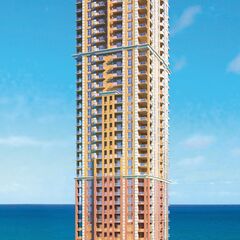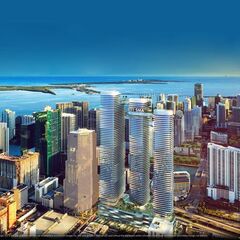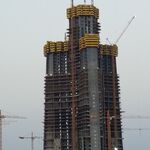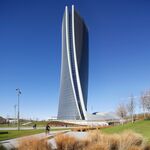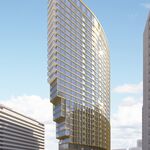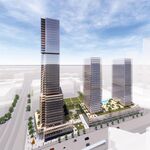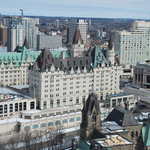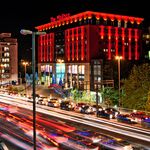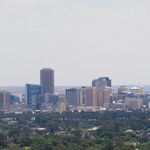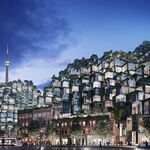SkyriseCities headquarters is closed for the holidays. We'll be back with our regularly scheduled editorial on January 4th, but we've collected skyscraper visions from around the world to give you something to read while we're away.
Miami's property boom is not only bringing new residents and businesses to the downtown area, it has also generated the need for additional infrastructure where Miamians can live, work, and play. In a city where property values are going up and soaring condominium and apartment towers are transforming the city's skyline, developer Guillermo Socarras envisioned a major project for Watson Island, situated in the Biscayne Bay, just east of Miami's central business district. Named Miapolis, the 975-metre tower was first designed by Kobi Karp Architecture and Interior Design in the early 2000s as the tallest building in the world.
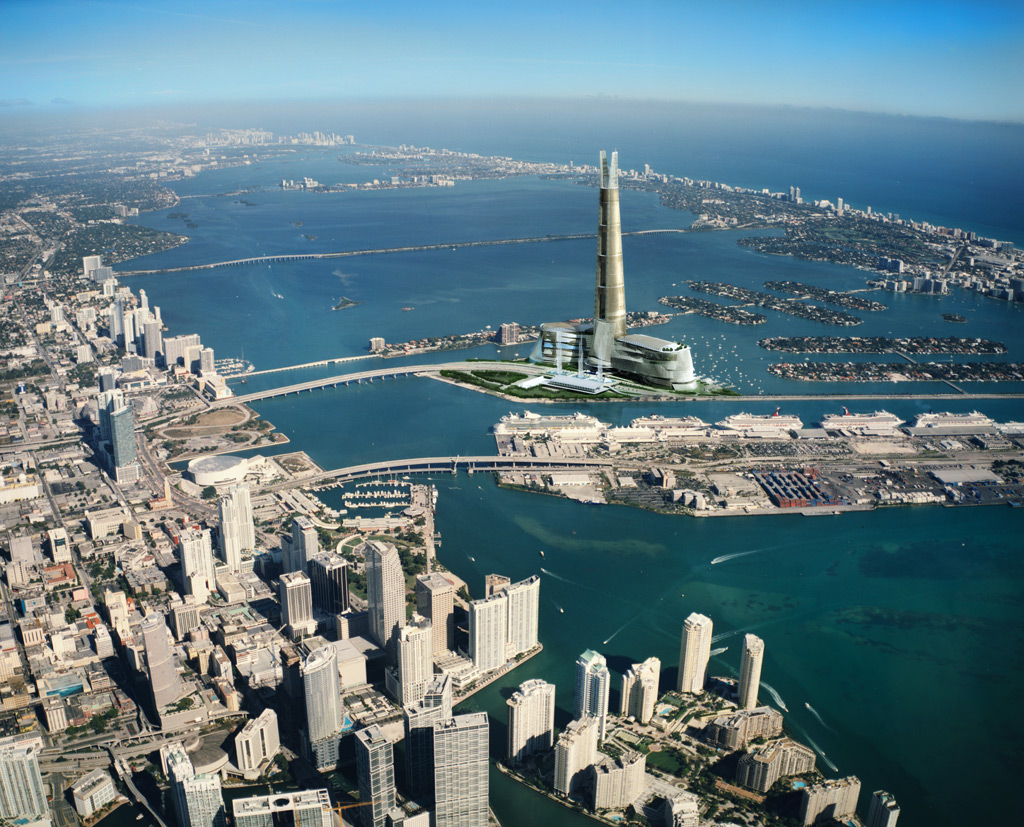 Miapolis, image via Kobi Karp Architecture
Miapolis, image via Kobi Karp Architecture
With 160 floors and a total are of 11 hectares, Miapolis was planned as a self-sufficient vertical city with all the amenities necessary for the daily lives of residents and visitors alike. One thousand residential units, ranging from townhomes to luxurious condominiums, offices spaces, a wide array of retail located within a shopping galleria, an international restaurant complex, an indoor amusement park, several hotels, a trade centre, a botanical garden, a yacht marina, a private beach, a sea fair and even a natural organic food market with local producers were planned for this $22 billion development.
 Miapolis, image via Kobi Karp Architecture
Miapolis, image via Kobi Karp Architecture
At the top of the tower, what was imagined as the tallest observatory on the planet would have boasted views as far as 96 kilometres in every direction. A telescope would be available for visitors to use and see even further. A rotating sky lounge with view of the ocean and Miami was also planned for the upper portion of the tower. Back at ground level, a public transportation plaza would be equipped with fountains performing a daily public water and light show. This would be the first of a series of public parks and green spaces planned for Miapolis, which aimed to be a green development.
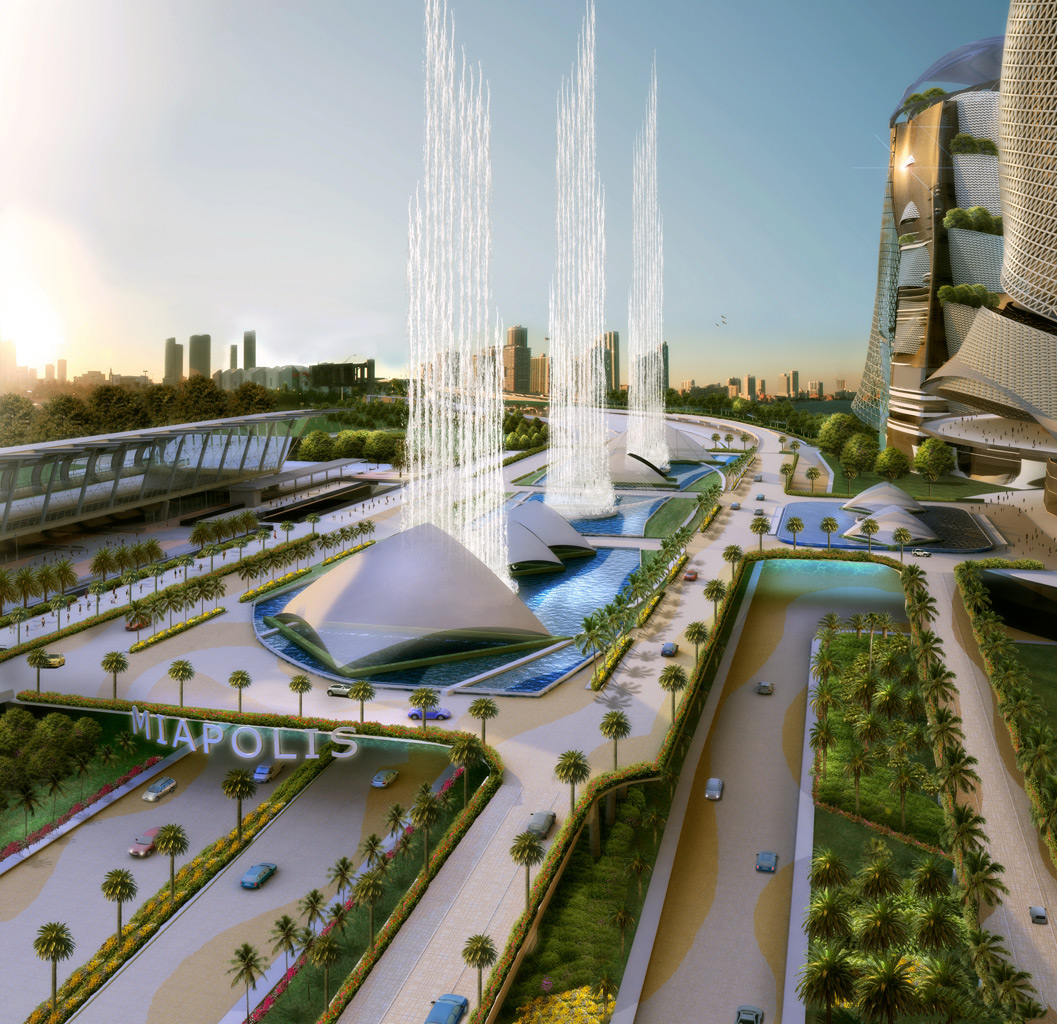 Miapolis, image via Kobi Karp Architecture
Miapolis, image via Kobi Karp Architecture
In fact, architects conceived the tower so that it would be certified LEED Platinum. Solar and wind technologies would be used to produce most of the energy needed for the city to function. In addition, water desalination would provide potable water for the population of the island. Although the construction of Miapolis will certainly never happen, it would have created 42,000 construction jobs and 28,000 new, permanent jobs.
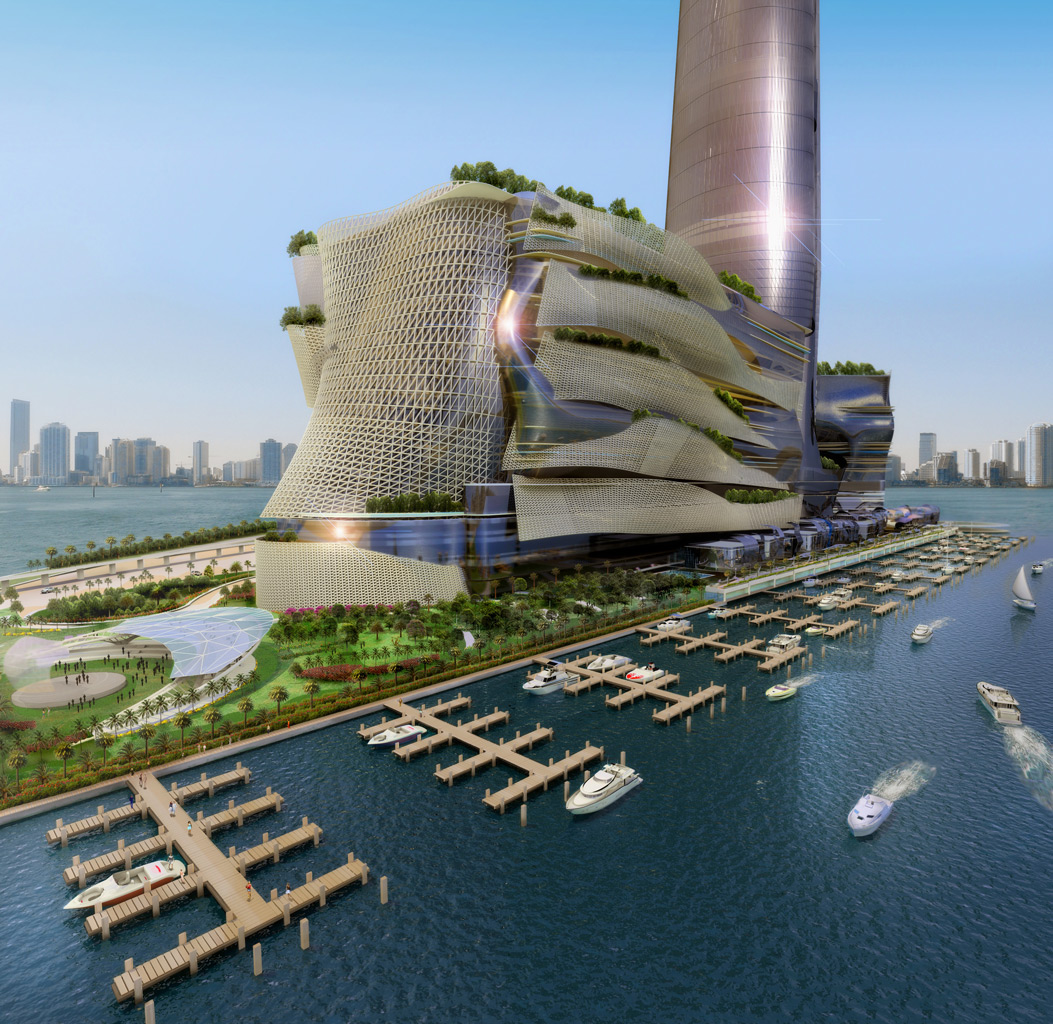 Miapolis, image via Kobi Karp Architecture
Miapolis, image via Kobi Karp Architecture
What do you think of this project for Miami? You can share you opinion by leaving a comment at the bottom of this page.

 10K
10K 



